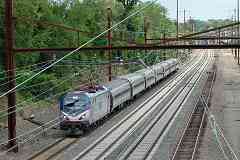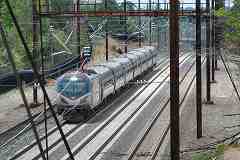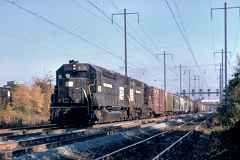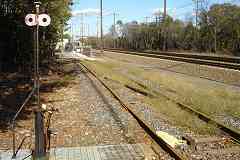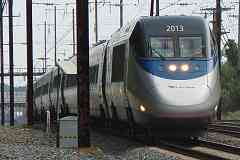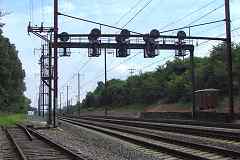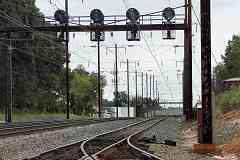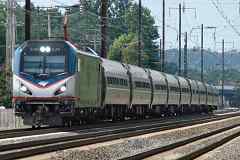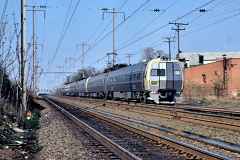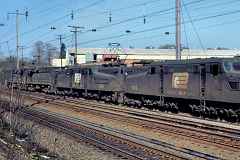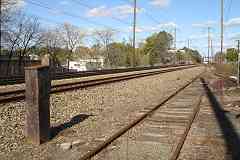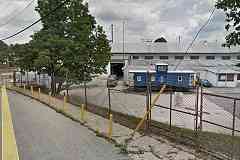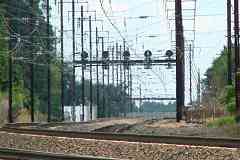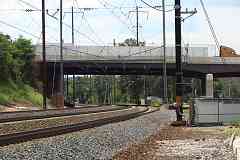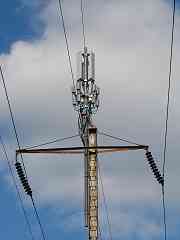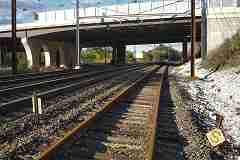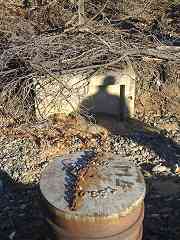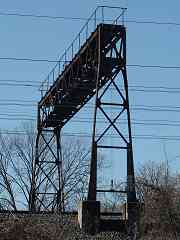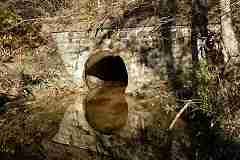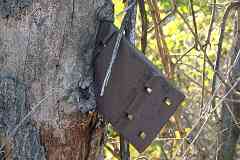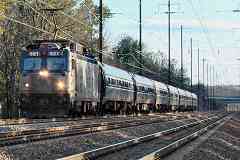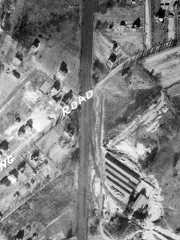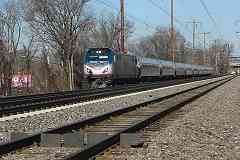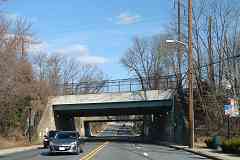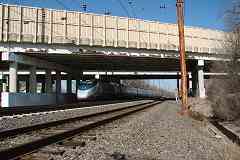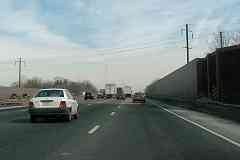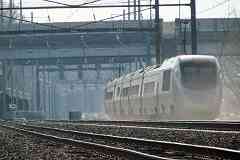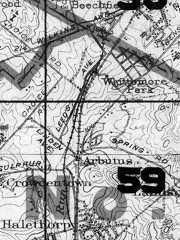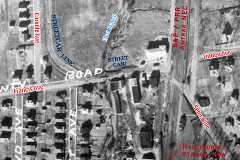|
Penn Central's freight operations continued through 1976 when it gave
way to Conrail. Here PC 4419 (model E44) shares duty with ex-Pennsylvania
RR GG1s 4824 and 4836, the latter two built during 1935. The lead engine's
number is not known.
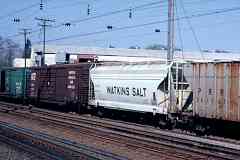
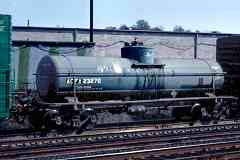 Their mixed freight consist included NYC 86901, Norfolk Franklin and Danville
NFD 2151, Watkins Salt SHPX 63533, PRR 261167, and ACFX 23270. At photo time
ACFX was a division of General Electric Rail Services; the tank car at right
was likely built around 1950 when ACFX was part of American Car and Foundry.
You might still be able to spot a car on duty with NYC or PRR reporting
marks, but by 2020 most were either repainted or retired.
Their mixed freight consist included NYC 86901, Norfolk Franklin and Danville
NFD 2151, Watkins Salt SHPX 63533, PRR 261167, and ACFX 23270. At photo time
ACFX was a division of General Electric Rail Services; the tank car at right
was likely built around 1950 when ACFX was part of American Car and Foundry.
You might still be able to spot a car on duty with NYC or PRR reporting
marks, but by 2020 most were either repainted or retired.
As seen in these photos, a black patch with colored lines within had been affixed
to the sides of railcars circa 1970. That was part of the KarTrak system.
Links:
PC 4419,
PC 4824,
PC 4836,
KarTrak
| 